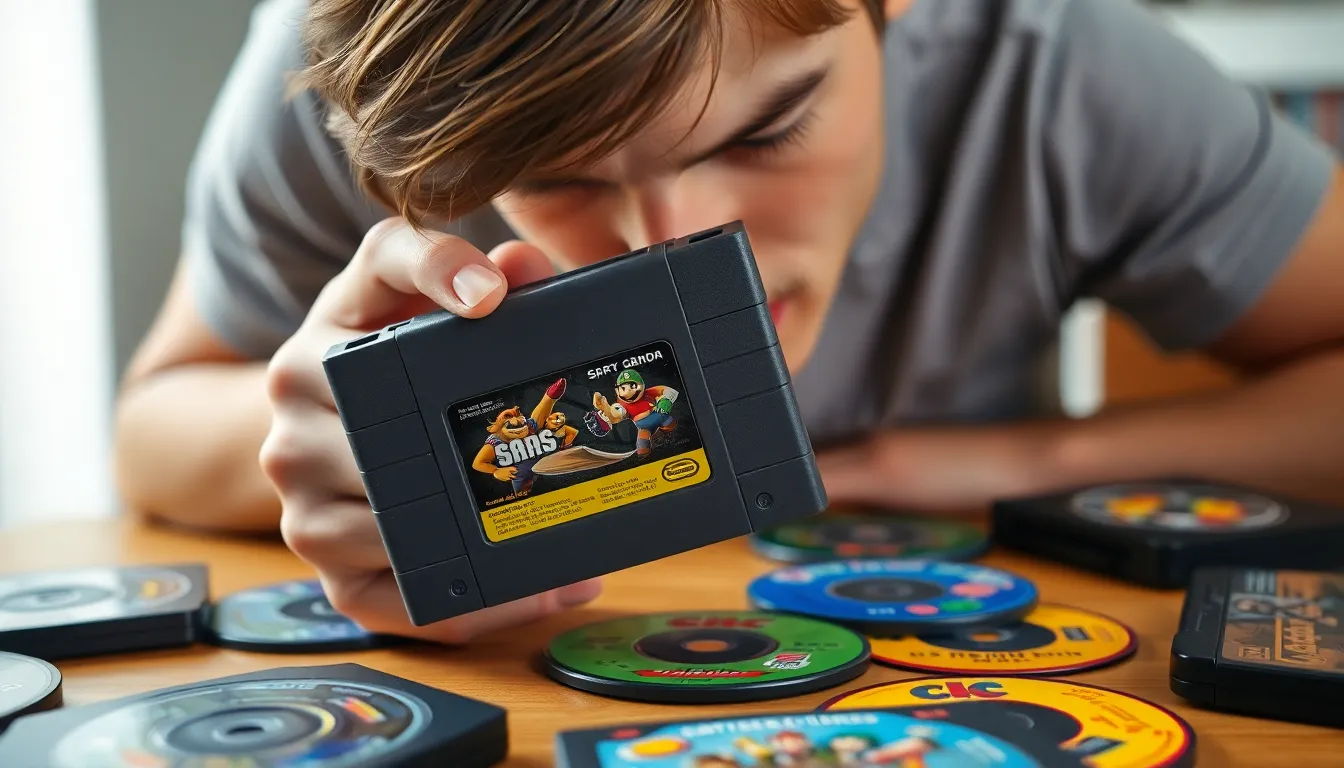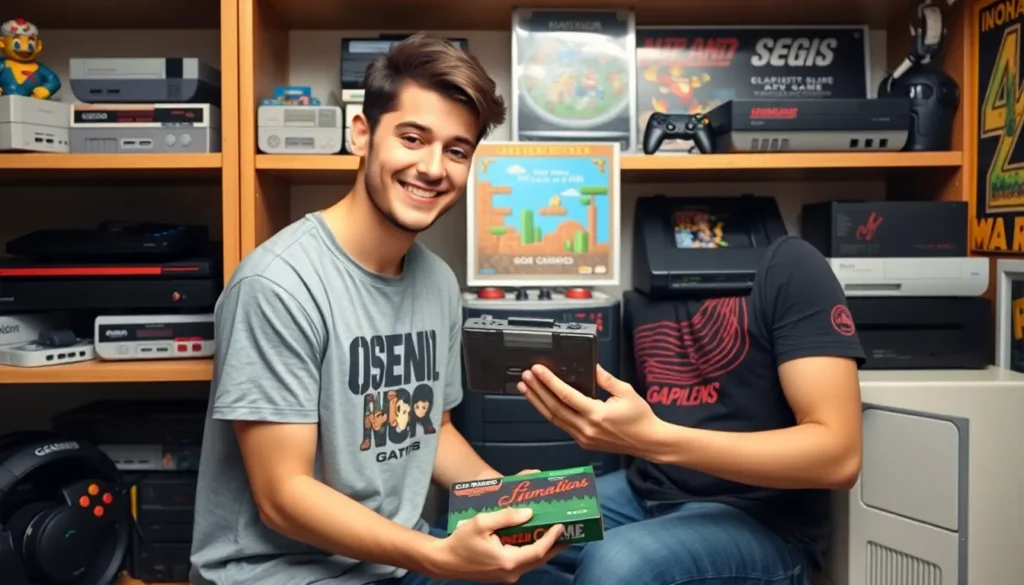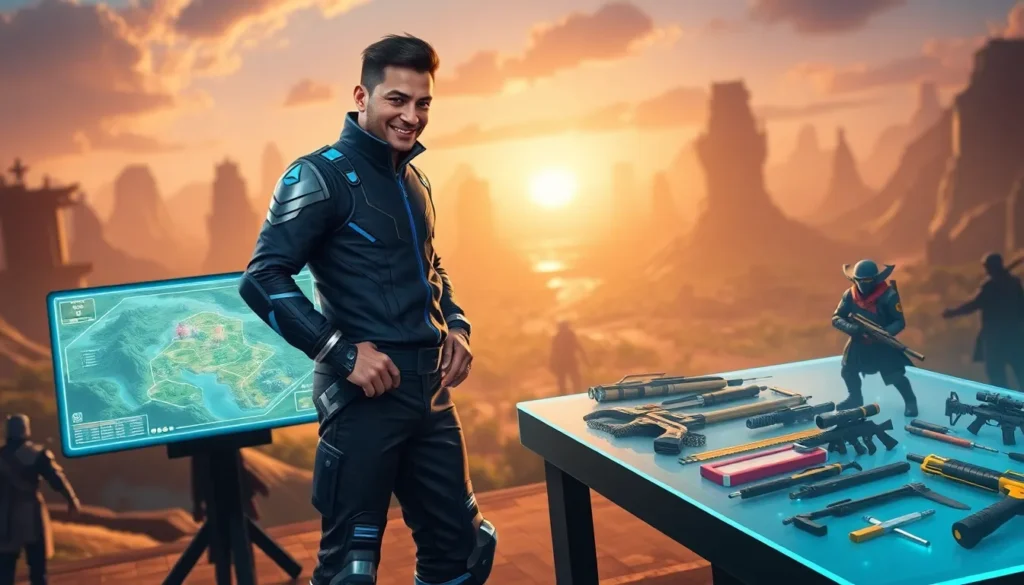Table of Contents
ToggleNostalgia for retro games has surged in recent years, drawing both seasoned gamers and newcomers alike into the vibrant world of classic consoles and pixelated adventures. From the iconic 8-bit graphics of the NES to the beloved titles of the Sega Genesis, these games offer a unique charm that modern titles often can’t replicate. But diving into the retro gaming market can feel overwhelming with so many options and potential pitfalls.
Navigating this landscape requires more than just passion; it demands knowledge about the best platforms, sought-after titles, and where to find them. Whether someone’s looking to relive childhood memories or explore gaming history, this buying guide will equip them with the essential tips and tricks to make smart purchases and build an impressive retro game collection.
Understanding Retro Games
Retro games evoke nostalgia, attracting both seasoned players and newcomers. Understanding what constitutes a retro game aids in navigating the collection process.
What Defines a Retro Game
A retro game typically refers to video games released before the 2000s. Key characteristics include:
- Pixel Art: Retro games often feature pixelated graphics, which create a distinctive visual style.
- Simple Mechanics: Gameplay usually emphasizes straightforward controls and objectives, making it accessible.
- Cultural Impact: Many retro titles have significantly influenced modern gaming, showcasing innovative ideas and storytelling techniques.
- Limited Hardware: These games were developed for older hardware, offering unique challenge levels compared to today’s high-definition graphics and advanced systems.
Popular Retro Game Consoles
Several consoles paved the way for the gaming industry. Notable systems include:
| Console | Release Year | Key Titles |
|---|---|---|
| Nintendo Entertainment System (NES) | 1985 | Super Mario Bros, The Legend of Zelda |
| Sega Genesis | 1988 | Sonic the Hedgehog, Streets of Rage |
| Super Nintendo Entertainment System (SNES) | 1990 | Super Metroid, Donkey Kong Country |
| Sony PlayStation | 1994 | Final Fantasy VII, Metal Gear Solid |
Each console brings unique games and experiences, appealing to various gaming preferences. Collectors often seek specific titles from these systems that hold personal or historical significance, enhancing the overall retro gaming experience.
Assessing Game Quality

Understanding game quality is crucial for anyone venturing into the retro gaming market. Factors such as visual and audio quality, along with the physical condition of cartridges and discs, play a significant role in determining whether a game is worth purchasing.
Visual and Audio Quality
Visual and audio elements define the nostalgic charm of retro games. He or she should examine graphics closely for clarity, colors, and any visual distortions. A well-preserved game typically presents vibrant colors and sharp graphics that enhance the overall experience.
Audio quality also matters. Iconic soundtracks and sound effects from retro games contribute significantly to their appeal. Buyers should check for any audio glitches or distortion during gameplay. Listening to gameplay footage or utilizing emulators to test sound quality before purchase is a good practice.
Cartridge and Disc Condition
Physical condition of cartridges and discs directly impacts game longevity and performance. He or she must inspect cartridges for scratches, cracks, and corrosion. Clean cartridge contacts ensure better connectivity and prevent gameplay issues.
For discs, look for scratches or blemishes on the surface. Minor scratches may not affect gameplay, but significant damage can lead to read errors or crashes. It’s advisable to test the game on a compatible console if possible. He or she should also consider purchasing from reputable sellers who offer a return policy in case of undisclosed defects.
Where to Buy Retro Games
Finding retro games requires exploring various options, both online and locally. These platforms offer diverse collections, catering to different preferences and budgets.
Online Marketplaces
Online marketplaces provide a broad selection of retro games from various sellers. Websites such as eBay, Amazon, and Etsy typically feature new and used titles across multiple platforms. eBay often has auctions, enabling buyers to snag products at competitive prices. Amazon’s vast inventory includes both retro games and accessories, allowing for easy comparison shopping. Etsy specializes in unique listings, including custom game adaptations and artwork linked to retro titles. Buyers should verify seller ratings and read reviews to ensure product authenticity and condition before making purchases.
Local Game Stores
Local game stores often serve as treasure troves for retro gaming enthusiasts. Many stores specialize in classic consoles and titles, offering personalized assistance. Designated stores might also host swap meets or community events, encouraging buyers to trade or find rare items. Regular visits can uncover hidden gems, such as hard-to-find cartridges or exclusive editions. It’s advisable for buyers to check inventory updates and inquire about special orders to maximize their collection efforts.
Pricing Considerations
Understanding pricing in the retro gaming market is essential for making informed purchases. Several factors contribute to the worth of games and price trends that buyers should recognize.
Evaluating Game Worth
Evaluating game worth involves assessing rarity, demand, and condition.
- Rarity: Limited editions or regional exclusives often command higher prices due to scarcity.
- Demand: Classic titles, particularly from beloved franchises, tend to sell for premium prices as nostalgia drives interest.
- Condition: Physical condition affects value significantly. Games in original boxes or with manuals fetch higher prices. Inspecting for signs of wear, such as scratches or fading, helps determine accurate worth.
Buyers should compare prices across various platforms to gauge standard market values, leveraging online databases and collector communities for reference.
Price Trends in Retro Gaming
Price trends indicate fluctuating values influenced by various factors.
- Market Growth: Increased interest in retro gaming has led to rising prices. Collector demand for specific titles or consoles generates competition, further driving costs.
- Seasonal Changes: Prices often spike during holiday seasons, with collectors seeking gifts or adding to personal collections.
- Digital Influence: Emulation and remakes impact original game prices. While digital versions may lower demand for physical copies, certain titles maintain or increase in value due to nostalgia factors.
Tracking price movements is vital for anticipating potential investments in retro games or systems. Observing auctions, sales, and collector forums can provide insightful data on trends.
Building a Retro Game Collection
Building a retro game collection requires strategic planning and organization. Focusing on specific genres, consoles, or titles streamlines the process and enhances the collecting experience.
Organizing Your Collection
Organizing a retro game collection enhances accessibility and enjoyment.
- Categorize by Console: Group games by console type such as NES, Sega Genesis, or SNES. This method simplifies shelf management and retrieval.
- Sort by Genre: Within each console section, organize games by genre, including action, adventure, or RPG. This categorization aligns similar experiences for easier browsing.
- Use Protective Cases: Store cartridges and discs in protective cases to preserve condition and appearance. Protective materials prevent dust accumulation and physical damage.
- Maintain Inventory: Keep a detailed inventory of games, including conditions and purchase prices. Inventory management aids in monitoring collection growth and potential resale values.
- Display Strategically: Set up a dedicated display area for showcasing favorite titles. A visually appealing layout highlights prized items while ensuring easy access.
Tips for Finding Rare Games
Finding rare games adds excitement to the collecting journey.
- Attend Conventions: Visit gaming conventions or expos to discover rare finds from vendors and fellow collectors. These events often feature hard-to-find titles and valuable networking opportunities.
- Join Online Forums: Engage in collector communities on platforms like Reddit or specialized forums. Members frequently share tips about available rare titles or upcoming releases.
- Explore Local Shops: Regularly browse local game stores or pawn shops, which may offer hidden gems. Staff can also provide insights on upcoming stock or rare titles.
- Utilize Social Media: Follow gaming groups on social media platforms like Facebook and Instagram. Sellers often post rare items along with purchase options.
- Keep an Eye on Auctions: Monitor online auction sites like eBay for potential deals on rare games. Setting alerts for specific titles ensures timely notifications for listings.
Navigating the retro gaming market can feel overwhelming but with the right approach it becomes an exciting journey. By understanding what defines retro games and recognizing the unique qualities of classic consoles, buyers can make informed decisions.
Assessing game quality and knowing where to purchase can significantly enhance the collecting experience. Keeping track of price trends and being strategic about building a collection will ensure that every addition is a valuable one.
This guide equips enthusiasts with the tools needed to dive into the nostalgic world of retro gaming and enjoy the charm of classic titles. With patience and passion, anyone can build a remarkable collection that celebrates gaming history.







